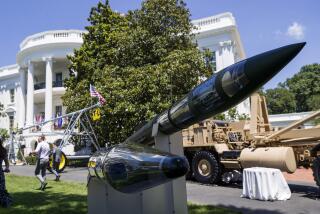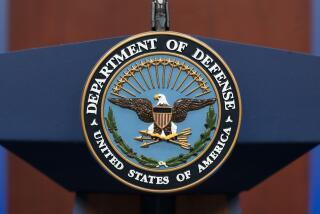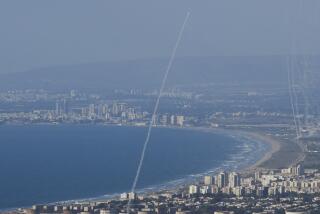Brigadeâs Iraq Mission Put Off to Assess Need
WASHINGTON â The Pentagon will delay the deployment of a combat brigade that had been scheduled to go to Iraq, a potential precursor to further troop reductions, Defense officials said Friday.
The delay will give the military more time to assess whether the unit -- the 2nd Brigade of the 1st Infantry Division, based in Germany -- is needed in Iraq.
The brigade was due to begin shipping equipment to Iraq next week from Schweinfurt, Germany. Once its equipment was loaded on trains for shipment, holding the brigade back from Iraq would have been harder.
Military officials have been debating whether to cancel the deployment or just send part of the brigade, which numbers about 3,500 soldiers. Unable to decide, military officials opted to delay deployment. A Pentagon official said the announcement of the delay could come as soon as this weekend from Germany.
âIt was a decision not to decide,â said one Defense official who requested anonymity because the decision had not been formally announced. âBut it means there is not a pending, immediate needâ for additional forces.
Defense Secretary Donald H. Rumsfeld wants to wait until a new Iraqi government is in place before deciding on U.S. troop cuts. Prime Minister-designate Nouri Maliki has a May 22 deadline for appointing his Cabinet.
The Defense Department announced in November that the 2nd Brigade would deploy to Iraq. At that time, the Pentagon also announced it was delaying the deployment of the 1st Brigade of the 1st Infantry Division, which had been notified earlier that it would be tapped for service in Iraq.
In late December, the Defense Department announced it was canceling the 1st Brigadeâs deployment and sending the 2nd Brigade of the 1st Armored Division to Kuwait as a quickreaction force. Those announcements cut the number of troops now in Iraq from 138,000 to 133,000.
If officials also cancel the deployment of the 2nd Brigade of the 1st Infantry Division, the number of U.S. combat brigades in Iraq will fall from 15 to 14 and the number of troops will decline to 130,000.
The last U.S. troop reduction came after the Iraqi national elections in December. At the time, Pentagon officials expressed hope that they could reduce troop strength to 100,000 or below by the end of 2006. Commanders say they still intend to reduce troops, and Army Gen. George W. Casey, the top commander in Iraq, said last month that his âgeneral timelineâ was still on track.
But a persistent political logjam in Baghdad has complicated plans for U.S. troop reductions. In the midst of the stalemate, the bombing of the Golden Mosque in Samarra in February threatened to unleash new waves of sectarian violence, forcing Casey to summon about 700 soldiers from the 1st Armored Division in Kuwait.
Defense officials said there were various points at which they could make decisions about the size of the force in Iraq. Units are tapped for deployment to Iraq more than a year ahead of time, but it is relatively easy for commanders to cut them from the list before they begin their pre-deployment training.
Once that training is complete and the unit gets ready to ship equipment to Iraq, the military reaches a critical juncture.
âThere are choke points; at some point you have to put stuff on trains,â said one Defense official. âBut there are ample opportunities for reduction.â
*
Times staff writer Peter Spiegel in Washington contributed to this report.
More to Read
Sign up for Essential California
The most important California stories and recommendations in your inbox every morning.
You may occasionally receive promotional content from the Los Angeles Times.










